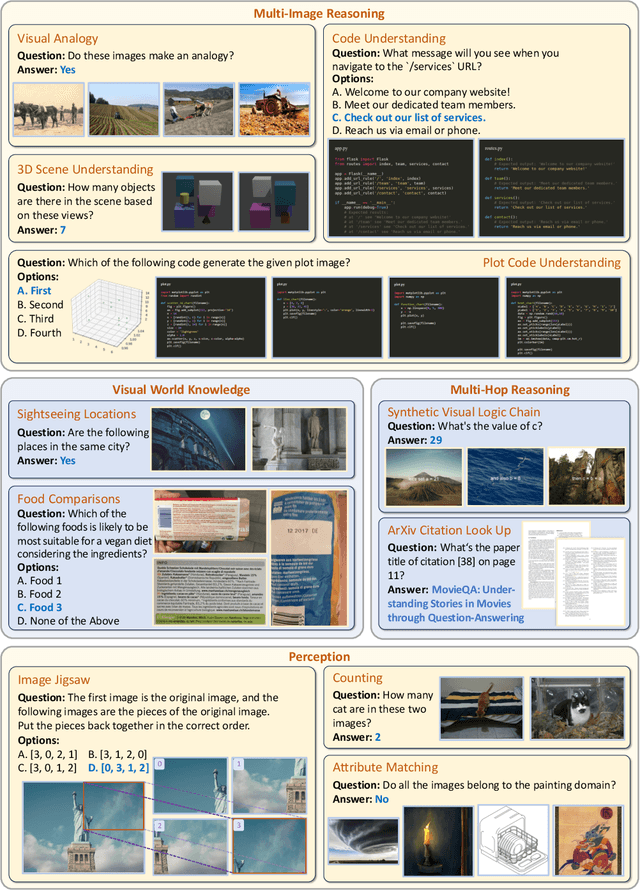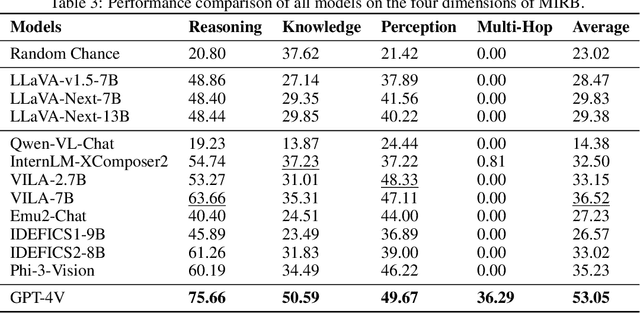Letian Zhang
Adaptive LoRA Experts Allocation and Selection for Federated Fine-Tuning
Sep 18, 2025Abstract:Large Language Models (LLMs) have demonstrated impressive capabilities across various tasks, but fine-tuning them for domain-specific applications often requires substantial domain-specific data that may be distributed across multiple organizations. Federated Learning (FL) offers a privacy-preserving solution, but faces challenges with computational constraints when applied to LLMs. Low-Rank Adaptation (LoRA) has emerged as a parameter-efficient fine-tuning approach, though a single LoRA module often struggles with heterogeneous data across diverse domains. This paper addresses two critical challenges in federated LoRA fine-tuning: 1. determining the optimal number and allocation of LoRA experts across heterogeneous clients, and 2. enabling clients to selectively utilize these experts based on their specific data characteristics. We propose FedLEASE (Federated adaptive LoRA Expert Allocation and SElection), a novel framework that adaptively clusters clients based on representation similarity to allocate and train domain-specific LoRA experts. It also introduces an adaptive top-$M$ Mixture-of-Experts mechanism that allows each client to select the optimal number of utilized experts. Our extensive experiments on diverse benchmark datasets demonstrate that FedLEASE significantly outperforms existing federated fine-tuning approaches in heterogeneous client settings while maintaining communication efficiency.
Enhancing Retrieval Augmentation via Adversarial Collaboration
Sep 18, 2025Abstract:Retrieval-augmented Generation (RAG) is a prevalent approach for domain-specific LLMs, yet it is often plagued by "Retrieval Hallucinations"--a phenomenon where fine-tuned models fail to recognize and act upon poor-quality retrieved documents, thus undermining performance. To address this, we propose the Adversarial Collaboration RAG (AC-RAG) framework. AC-RAG employs two heterogeneous agents: a generalist Detector that identifies knowledge gaps, and a domain-specialized Resolver that provides precise solutions. Guided by a moderator, these agents engage in an adversarial collaboration, where the Detector's persistent questioning challenges the Resolver's expertise. This dynamic process allows for iterative problem dissection and refined knowledge retrieval. Extensive experiments show that AC-RAG significantly improves retrieval accuracy and outperforms state-of-the-art RAG methods across various vertical domains.
GPT-IMAGE-EDIT-1.5M: A Million-Scale, GPT-Generated Image Dataset
Jul 28, 2025Abstract:Recent advancements in large multimodal models like GPT-4o have set a new standard for high-fidelity, instruction-guided image editing. However, the proprietary nature of these models and their training data creates a significant barrier for open-source research. To bridge this gap, we introduce GPT-IMAGE-EDIT-1.5M, a publicly available, large-scale image-editing corpus containing more than 1.5 million high-quality triplets (instruction, source image, edited image). We systematically construct this dataset by leveraging the versatile capabilities of GPT-4o to unify and refine three popular image-editing datasets: OmniEdit, HQ-Edit, and UltraEdit. Specifically, our methodology involves 1) regenerating output images to enhance visual quality and instruction alignment, and 2) selectively rewriting prompts to improve semantic clarity. To validate the efficacy of our dataset, we fine-tune advanced open-source models on GPT-IMAGE-EDIT-1.5M. The empirical results are exciting, e.g., the fine-tuned FluxKontext achieves highly competitive performance across a comprehensive suite of benchmarks, including 7.24 on GEdit-EN, 3.80 on ImgEdit-Full, and 8.78 on Complex-Edit, showing stronger instruction following and higher perceptual quality while maintaining identity. These scores markedly exceed all previously published open-source methods and substantially narrow the gap to leading proprietary models. We hope the full release of GPT-IMAGE-EDIT-1.5M can help to catalyze further open research in instruction-guided image editing.
EvdCLIP: Improving Vision-Language Retrieval with Entity Visual Descriptions from Large Language Models
May 24, 2025Abstract:Vision-language retrieval (VLR) has attracted significant attention in both academia and industry, which involves using text (or images) as queries to retrieve corresponding images (or text). However, existing methods often neglect the rich visual semantics knowledge of entities, thus leading to incorrect retrieval results. To address this problem, we propose the Entity Visual Description enhanced CLIP (EvdCLIP), designed to leverage the visual knowledge of entities to enrich queries. Specifically, since humans recognize entities through visual cues, we employ a large language model (LLM) to generate Entity Visual Descriptions (EVDs) as alignment cues to complement textual data. These EVDs are then integrated into raw queries to create visually-rich, EVD-enhanced queries. Furthermore, recognizing that EVD-enhanced queries may introduce noise or low-quality expansions, we develop a novel, trainable EVD-aware Rewriter (EaRW) for vision-language retrieval tasks. EaRW utilizes EVD knowledge and the generative capabilities of the language model to effectively rewrite queries. With our specialized training strategy, EaRW can generate high-quality and low-noise EVD-enhanced queries. Extensive quantitative and qualitative experiments on image-text retrieval benchmarks validate the superiority of EvdCLIP on vision-language retrieval tasks.
FedALT: Federated Fine-Tuning through Adaptive Local Training with Rest-of-the-World LoRA
Mar 14, 2025Abstract:Fine-tuning large language models (LLMs) in federated settings enables privacy-preserving adaptation but suffers from cross-client interference due to model aggregation. Existing federated LoRA fine-tuning methods, primarily based on FedAvg, struggle with data heterogeneity, leading to harmful cross-client interference and suboptimal personalization. In this work, we propose \textbf{FedALT}, a novel personalized federated LoRA fine-tuning algorithm that fundamentally departs from FedAvg. Instead of using an aggregated model to initialize local training, each client continues training its individual LoRA while incorporating shared knowledge through a separate Rest-of-the-World (RoTW) LoRA component. To effectively balance local adaptation and global information, FedALT introduces an adaptive mixer that dynamically learns input-specific weightings between the individual and RoTW LoRA components using the Mixture-of-Experts (MoE) principle. Through extensive experiments on NLP benchmarks, we demonstrate that FedALT significantly outperforms state-of-the-art personalized federated LoRA fine-tuning methods, achieving superior local adaptation without sacrificing computational efficiency.
Oasis: One Image is All You Need for Multimodal Instruction Data Synthesis
Mar 13, 2025Abstract:The success of multi-modal large language models (MLLMs) has been largely attributed to the large-scale training data. However, the training data of many MLLMs is unavailable due to privacy concerns. The expensive and labor-intensive process of collecting multi-modal data further exacerbates the problem. Is it possible to synthesize multi-modal training data automatically without compromising diversity and quality? In this paper, we propose a new method, Oasis, to synthesize high-quality multi-modal data with only images. Oasis breaks through traditional methods by prompting only images to the MLLMs, thus extending the data diversity by a large margin. Our method features a delicate quality control method which ensures the data quality. We collected over 500k data and conducted incremental experiments on LLaVA-NeXT. Extensive experiments demonstrate that our method can significantly improve the performance of MLLMs. The image-based synthesis also allows us to focus on the specific-domain ability of MLLMs. Code and data will be publicly available.
LoRA-FAIR: Federated LoRA Fine-Tuning with Aggregation and Initialization Refinement
Nov 22, 2024



Abstract:Foundation models (FMs) achieve strong performance across diverse tasks with task-specific fine-tuning, yet full parameter fine-tuning is often computationally prohibitive for large models. Parameter-efficient fine-tuning (PEFT) methods like Low-Rank Adaptation (LoRA) reduce this cost by introducing low-rank matrices for tuning fewer parameters. While LoRA allows for efficient fine-tuning, it requires significant data for adaptation, making Federated Learning (FL) an appealing solution due to its privacy-preserving collaborative framework. However, combining LoRA with FL introduces two key challenges: the \textbf{Server-Side LoRA Aggregation Bias}, where server-side averaging of LoRA matrices diverges from the ideal global update, and the \textbf{Client-Side LoRA Initialization Drift}, emphasizing the need for consistent initialization across rounds. Existing approaches address these challenges individually, limiting their effectiveness. We propose LoRA-FAIR, a novel method that tackles both issues by introducing a correction term on the server while keeping the original LoRA modules, enhancing aggregation efficiency and accuracy. LoRA-FAIR maintains computational and communication efficiency, yielding superior performance over state-of-the-art methods. Experimental results on ViT and MLP-Mixer models across large-scale datasets demonstrate that LoRA-FAIR consistently achieves performance improvements in FL settings.
Learning the Optimal Path and DNN Partition for Collaborative Edge Inference
Oct 02, 2024



Abstract:Recent advancements in Deep Neural Networks (DNNs) have catalyzed the development of numerous intelligent mobile applications and services. However, they also introduce significant computational challenges for resource-constrained mobile devices. To address this, collaborative edge inference has been proposed. This method involves partitioning a DNN inference task into several subtasks and distributing these across multiple network nodes. Despite its potential, most current approaches presume known network parameters -- like node processing speeds and link transmission rates -- or rely on a fixed sequence of nodes for processing the DNN subtasks. In this paper, we tackle a more complex scenario where network parameters are unknown and must be learned, and multiple network paths are available for distributing inference tasks. Specifically, we explore the learning problem of selecting the optimal network path and assigning DNN layers to nodes along this path, considering potential security threats and the costs of switching paths. We begin by deriving structural insights from the DNN layer assignment with complete network information, which narrows down the decision space and provides crucial understanding of optimal assignments. We then cast the learning problem with incomplete network information as a novel adversarial group linear bandits problem with switching costs, featuring rewards generation through a combined stochastic and adversarial process. We introduce a new bandit algorithm, B-EXPUCB, which combines elements of the classical blocked EXP3 and LinUCB algorithms, and demonstrate its sublinear regret. Extensive simulations confirm B-EXPUCB's superior performance in learning for collaborative edge inference over existing algorithms.
Benchmarking Multi-Image Understanding in Vision and Language Models: Perception, Knowledge, Reasoning, and Multi-Hop Reasoning
Jun 18, 2024



Abstract:The advancement of large language models (LLMs) has significantly broadened the scope of applications in natural language processing, with multi-modal LLMs extending these capabilities to integrate and interpret visual data. However, existing benchmarks for visual language models (VLMs) predominantly focus on single-image inputs, neglecting the crucial aspect of multi-image understanding. In this paper, we introduce a Multi-Image Relational Benchmark MIRB, designed to evaluate VLMs' ability to compare, analyze, and reason across multiple images. Our benchmark encompasses four categories: perception, visual world knowledge, reasoning, and multi-hop reasoning. Through a comprehensive evaluation of a wide range of open-source and closed-source models, we demonstrate that while open-source VLMs were shown to approach the performance of GPT-4V in single-image tasks, a significant performance gap remains in multi-image reasoning tasks. Our findings also reveal that even the state-of-the-art GPT-4V model struggles with our benchmark, underscoring the need for further research and development in this area. We believe our contribution of MIRB could serve as a testbed for developing the next-generation multi-modal models.
ImageNet3D: Towards General-Purpose Object-Level 3D Understanding
Jun 13, 2024



Abstract:A vision model with general-purpose object-level 3D understanding should be capable of inferring both 2D (e.g., class name and bounding box) and 3D information (e.g., 3D location and 3D viewpoint) for arbitrary rigid objects in natural images. This is a challenging task, as it involves inferring 3D information from 2D signals and most importantly, generalizing to rigid objects from unseen categories. However, existing datasets with object-level 3D annotations are often limited by the number of categories or the quality of annotations. Models developed on these datasets become specialists for certain categories or domains, and fail to generalize. In this work, we present ImageNet3D, a large dataset for general-purpose object-level 3D understanding. ImageNet3D augments 200 categories from the ImageNet dataset with 2D bounding box, 3D pose, 3D location annotations, and image captions interleaved with 3D information. With the new annotations available in ImageNet3D, we could (i) analyze the object-level 3D awareness of visual foundation models, and (ii) study and develop general-purpose models that infer both 2D and 3D information for arbitrary rigid objects in natural images, and (iii) integrate unified 3D models with large language models for 3D-related reasoning.. We consider two new tasks, probing of object-level 3D awareness and open vocabulary pose estimation, besides standard classification and pose estimation. Experimental results on ImageNet3D demonstrate the potential of our dataset in building vision models with stronger general-purpose object-level 3D understanding.
 Add to Chrome
Add to Chrome Add to Firefox
Add to Firefox Add to Edge
Add to Edge